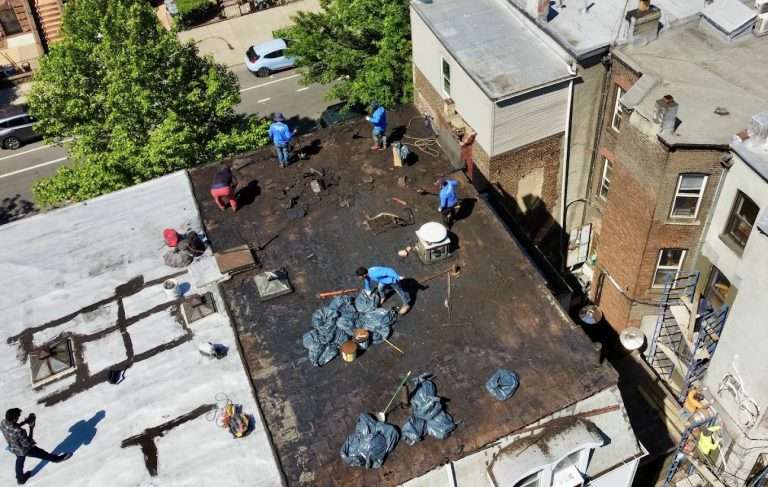Need to replace your roof? Get durable, long-lasting solutions with expert installation. Flat roofs, while cost-effective and space-efficient, can develop issues such as leaks, ponding water, and structural deterioration over time. When repairs are no longer sufficient, installing a new roof becomes essential to maintain the integrity of the building and avoid costly damages.
This guide covers when and why to replace a flat roof, the replacement process, and key considerations to ensure a durable roofing solution. Contact us today for a free estimate!

Signs You Need a New Flat Roof
While we do have a roof repair service for minor damages that can be repaired, certain issues indicate that a full replacement is the best course of action. These include:
- Frequent Leaks: If leaks keep recurring despite multiple repairs, it may be a sign that the roofing material has reached the end of its lifespan.
- Pooling Water: Flat roofs should have a slight slope to facilitate drainage. Persistent ponding water can lead to structural damage and increase the risk of leaks.
- Cracks and Blisters: If the roof surface has visible cracks, blisters, or bubbling, it could be a sign of trapped moisture and material failure.
- Mold and Mildew Growth: Excess moisture can lead to mold growth inside the building, affecting air quality and structural integrity.
- Old Age: Most flat roofs last between 15 and 25 years. If the roof is nearing the end of its lifespan, it’s wise to consider replacement before major issues arise.
The Roof Replacement Process
Installing a new roof involves several steps to ensure a durable and effective solution. Here’s a breakdown of the process:
Step 1: Inspection and Preparation
- Conduct a thorough assessment of the existing roof to determine the extent of damage.
- Remove the old roofing material and inspect the decking for structural integrity.
Step 2: Repair and Reinforcement
- Replace any damaged decking and reinforce weak areas to provide a solid foundation.
- Install a vapor barrier to prevent moisture buildup.
Step 3: Installation of New Roofing Material
- Apply the chosen roofing material following manufacturer guidelines.
- Seal seams and flashing to prevent leaks.
Step 4: Final Inspection and Maintenance Plan
- Conduct a final quality check to ensure proper installation.
- Develop a maintenance schedule to extend the roof’s lifespan.

Key Considerations for a Successful Installation
- Hire a Professional Contractor
Flat roof installations require expertise to prevent common issues such as poor drainage and improper sealing. Hiring a certified contractor ensures quality workmanship and adherence to local building codes.
- Consider Energy Efficiency
Opt for materials with reflective properties to reduce cooling costs and improve energy efficiency.
- Budgeting and Cost Factors
The cost of replacing a flat roof depends on labor and roof size. Replacement costs ranges from $5 to $15 per square foot.
- Warranty and Insurance
Ensure that the roofing material comes with a manufacturer’s warranty. Additionally, check if your property insurance covers the replacement in case of storm damage or unforeseen issues.
Conclusion
Replacing a flat roof is a significant investment that enhances the safety and longevity of a building. Identifying the right time for installation and hiring experienced professionals can make the process smoother and more cost-effective. Regular maintenance and inspections will further extend the life of the new roof, ensuring long-term protection and peace of mind.
